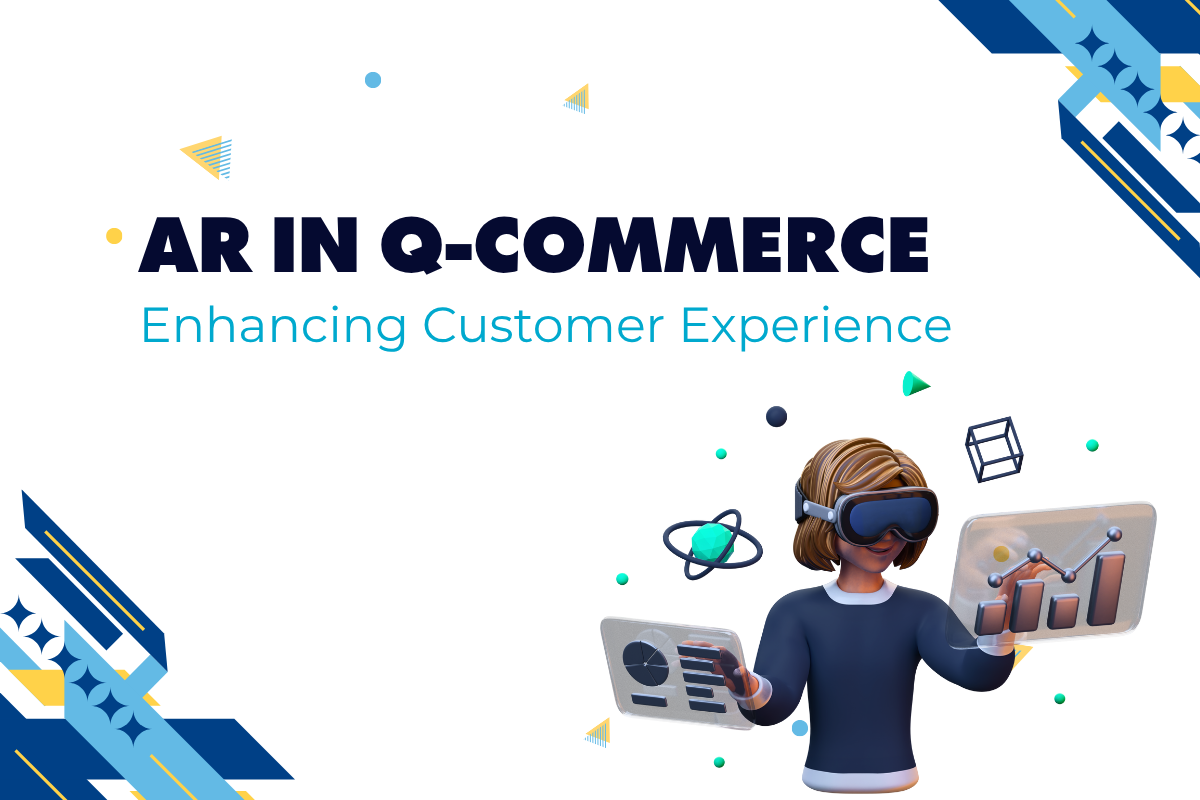The rapid rise of AR in Q-commerce (Quick Commerce) has redefined how we shop—prioritizing speed, convenience, and impulse gratification. But as the sector matures, customer expectations are shifting. It’s no longer enough to be fast; brands must also be immersive, intuitive, and informative. Enter Augmented Reality (AR)—a game-changing innovation that brings tangible experience to intangible transactions.
As Q-commerce platforms like Blinkit, Zepto, Swiggy Instamart, and Amazon Fresh race to fulfill hyperlocal demand, integrating AR into this ecosystem is becoming the next frontier. It’s where ecommerce marketing services intersect with sensory engagement, and where brands can truly differentiate.
Why AR Is a Natural Fit for Q-Commerce
Q-commerce thrives on urgency. Consumers are typically on mobile, making fast decisions for everyday needs—from snacks and groceries to beauty and wellness items. This brevity leaves little room for doubt.
Here’s how AR bridges the trust gap:
- Virtual Product Placement: Shoppers can see how a product fits in their space or on their face.
- Interactive Packaging: A scan reveals tutorials, reviews, or ingredients.
- Virtual Try-Ons: Especially impactful in categories like eyewear, makeup, and apparel.
When combined with powerful tools from an ecommerce marketing agency, these features become not just technological flourishes, but key conversion drivers.
Transformative Use Cases of AR in Q-Commerce
1. Home Decor and Furniture
IKEA’s AR app allows users to visualize furniture in their homes before purchasing. In Q-commerce, this experience can be adapted for smaller, high-frequency items like lamps, storage units, or kitchenware.
2. Beauty and Skincare
Lenskart and Nykaa use AR to let users virtually try on eyeglasses or lipstick shades. When integrated into a Q-commerce app interface, it accelerates purchase decisions and minimizes returns.
3. Packaged Goods and Wellness Products
FMCG brands can embed AR-enabled QR codes that explain sourcing, health benefits, or recipes. These campaigns are often supported by Amazon product listing services or Flipkart listing service for discoverability.
4. Interactive Promotions
Brands can introduce AR-based scratch cards or gamified loyalty programs—especially effective when designed by a quick-commerce marketing agency that understands mobile-first behavior.
Benefits for Brands and Consumers
For brands, AR is not just about standing out visually—it’s a performance tool.
- Higher Engagement Rates: AR content sees 4x higher dwell time compared to static visuals.
- Reduced Return Rates: By enabling more informed purchases, AR minimizes post-delivery dissatisfaction.
- Increased Conversion: With visual confidence, consumers are more likely to commit instantly.
- Brand Loyalty: Memorable experiences foster emotional connection and repeat purchases.
For consumers, AR solves three major Q-commerce pain points:
- Uncertainty: What does the item really look like?
- Overwhelm: Too many similar choices, not enough clarity.
- Lack of Interaction: Limited ways to engage before clicking “Buy Now.”
The Role of Technology and Agencies
While AR sounds sleek, its success lies in seamless integration. That’s where technical SEO, backend development, and creative UX intersect.
Some key factors to consider:
- Platform Compatibility: The AR interface must work across Android, iOS, and web versions.
- Speed Optimization: AR elements must load fast to align with Q-commerce’s core promise.
- Content Format: Lightweight, browser-friendly animations or camera overlays are preferred.
At AKOI, India’s trusted ecommerce marketing agency, we help brands overcome these hurdles with complete support—from creative design and listing integration to campaign analytics and ROI (Return on investment) reporting.
Marketing Impact of AR in Q-Commerce
AR in Q-commerce isn’t just for product pages—it can be embedded across the funnel:
- Top of Funnel: Use AR ads to stop scrolling on social media or Amazon’s DSP (Demand Side Platform).
- Middle of Funnel: Use AR product pages created through Amazon advertising agency services or Flipkart placements.
- Bottom of Funnel: Re-engage cart abandoners with immersive retargeting banners powered by AR.
These integrations, supported by services like ecommerce marketplace marketing company offerings, help drive smarter campaigns and maximize performance marketing spend.
Challenges in AR Adoption—and How to Overcome Them
Despite the benefits, there are barriers:
- Cost of Development: Custom 3D assets and mobile integration require investment.
- Device Compatibility: Some consumers may have older phones that lack AR support.
- User Awareness: Not everyone knows how to use AR features right away.
Brands must partner with experienced providers like AKOI—who specialize not only in Amazon marketing services and listings, but also in cross-platform ecommerce integrations—to roll out AR campaigns that are both scalable and educational.
AR and the Future of Customer Experience in Q-Commerce
Looking ahead, AR will continue to evolve. The convergence of AI, AR, and Q-commerce will lead to:
- Personalized 3D Shopping: AI recommendations within AR experiences.
- Voice-AR Integration: Hands-free shopping using smart assistants.
- Green Commerce with AR: Educating users on eco-friendly products through immersive storytelling.
This synergy enhances user satisfaction, shortens the decision journey, and boosts long-term loyalty—making AR not just a feature, but a foundation of the next-gen ecommerce strategy.
Conclusion
Q-commerce is no longer just about being the fastest—it’s about delivering the most engaging, frictionless, and human-centered experiences. Augmented Reality offers that bridge, transforming digital convenience into emotional connection.
Whether you’re launching on Blinkit, scaling on Amazon, or optimizing Flipkart listings, integrating AR can elevate your brand’s presence and impact.
At AKOI, we help brands build future-ready commerce strategies powered by AR, speed, and storytelling.
Let’s create shopping experiences that move faster—and feel smarter.


